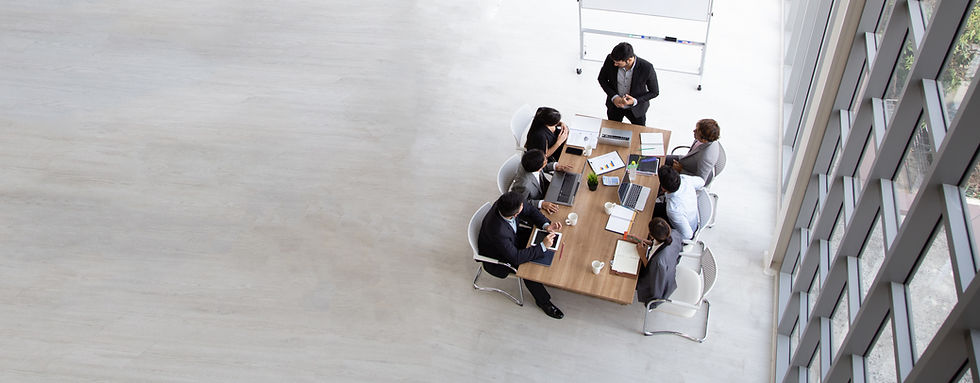Grow Where You’re Planted: How Your Space Can Heal You
- MA Emma Kocmanek Dikyova, DipArt

- Jun 7
- 4 min read
Have you ever noticed how plants thrive when they’re in the right soil, with the right light and just enough water? People are the same. We grow best in the right conditions.
Yet so many of us are trying to bloom in spaces that drain us — cluttered rooms, dark offices, or noisy homes that leave us feeling tired, stressed, or disconnected. If this sounds familiar, there’s good news: you can change the environment around you to better support the life within you.
This is the heart of salutogenic design — and it fits beautifully with the principles of Life Philosophy Design: the intentional practice of designing your life from the inside out, based on your core values, vision, and emotional well-being.
Whether you're into daily affirmations, practicing mindfulness, or collecting motivational quotes, your surroundings should inspire your growth, not hold you back.
Why Some Gardens Just Don’t Grow
In farming, if a crop isn’t growing, a good farmer doesn’t blame the plant. They look at the soil, sunlight, water, and wind.
Salutogenic design works the same way. The word salutogenic is a fancy science word for “health-generating.” It’s a powerful concept in both design and personal development. It means: let’s create environments that help people feel better, not worse.
Instead of asking, “What’s wrong with me?” — it asks, “What’s missing from my environment that would help me thrive?”
Architects like Tye Farrow use this approach to create spaces that promote stress relief, positive energy, and mental clarity. Think natural light, calming textures, open space, and greenery — all elements that help you feel more grounded and inspired.
Why Your Space Matters
Imagine trying to grow a tomato in a cupboard.
No light. No fresh air. No space to stretch.
It wouldn’t stand a chance — and neither do you, if your space constantly zaps your energy. Studies show that your environment impacts your mindset, motivation, sleep, productivity, and overall mental health. Whether you're working on self-growth, overcoming burnout, or just trying to live more peacefully, your surroundings matter.
When your space feels like a greenhouse — warm, supportive, filled with life — you grow faster and easier. But if it’s more like a drought — dry, cold, chaotic — even small tasks feel hard. A healing space is fertile ground for your goals and daily rituals.
How to Use It in Life Philosophy Design
Life Philosophy Design is all about intentional living — planting the right seeds in the right soil. It’s a personal, values-driven way to build your life from the inside out.
Here’s how to turn your space into a wellness tool that supports your personal development journey:
Walk Your Fields (a.k.a., Do an Environment Check)
Stroll through your space like a farmer checking crops. What’s thriving? What’s withering? Where do you feel energized, calm, or tense?
Your space should support your daily habits — from journaling, to reading motivational quotes, to practicing self-care rituals.
Weed Out What’s Not Working
Like weeds in a garden, clutter and chaos steal your attention and energy. Clear what no longer reflects the life you’re building. Make room for affirmations, reflection, and peace.
Add Light and Life
Bring in plants, open a window, or add a soft lamp. Natural light, fresh air, and even a vase of flowers can lift your mood and nourish your emotional well-being.
Design for Movement and Flow
A healing space invites gentle movement — a yoga mat in the corner, a cozy reading nook, or space to breathe and stretch. Think of it as body wisdom meeting spatial intelligence.
Create Zones of Meaning
Set up small "ritual spaces" for your daily practices. Maybe a morning coffee spot with a view, a shelf of inspirational books, or a desk with vision boards and goal-setting affirmations. Let your space reflect your purpose.
You’re a living being — just like a tree, a vine, or a wildflower. And every living thing needs the right environment to grow.
Salutogenic design reminds us that transformation doesn’t always start from doing more — sometimes it starts from simply changing what surrounds you. When your space aligns with your values and intentions, it becomes your partner in growth.
With Life Philosophy Design, you are planting your life on purpose. Salutogenic design is how you water it, light it, and let it bloom.
So go ahead — add a plant, hang that inspirational quote, open a window, and create space for peace. Small changes grow big lives.
References
Farrow, T. (2015). Canadian architect Tye Farrow backs total health buildings. Sydney Morning Herald.
Antonovsky, A. (1996). The salutogenic model as a theory to guide health promotion. Health Promotion International.
Ulrich, R.S. (1984). View through a window may influence recovery from surgery. Science.
Evans, G. W., & McCoy, J. M. (1998). When buildings don’t work: The role of architecture in human health. Journal of Environmental Psychology.
Pretty, J. et al. (2005). The mental and physical health outcomes of green exercise. Int. Journal of Environmental Health Research.



Comments